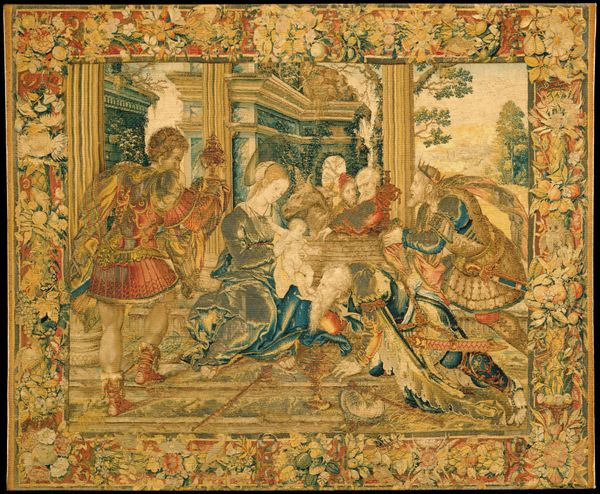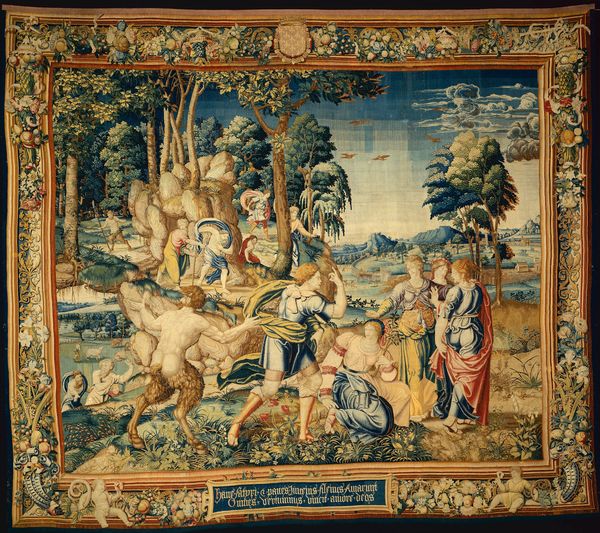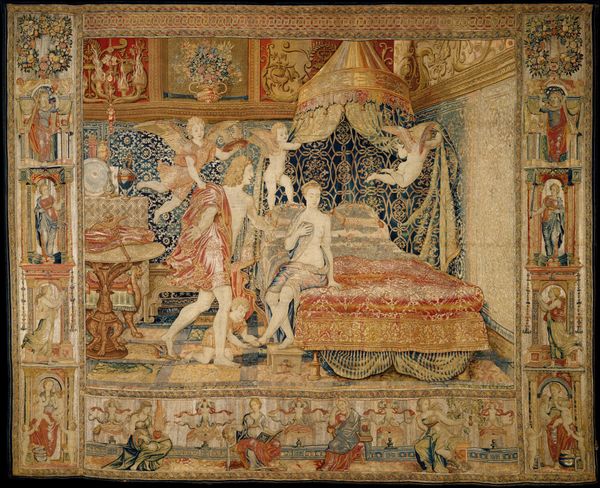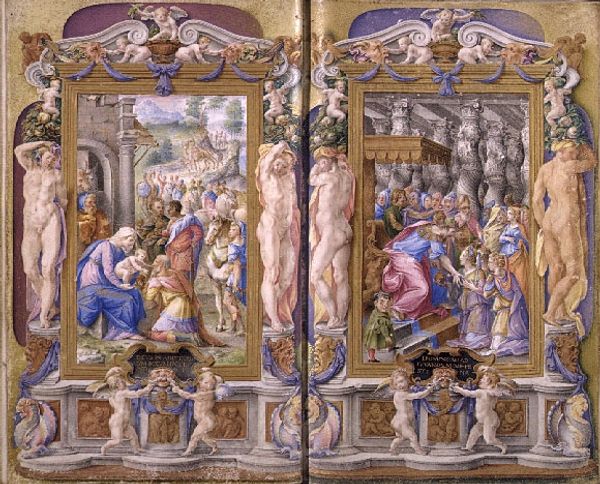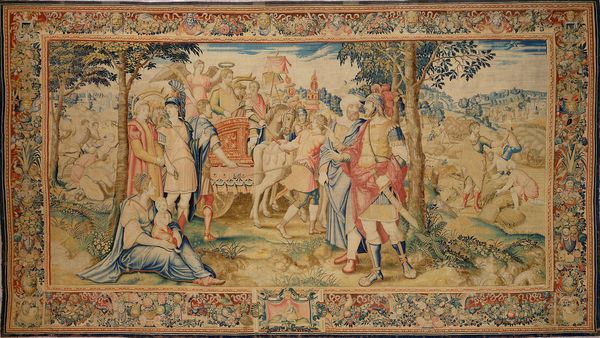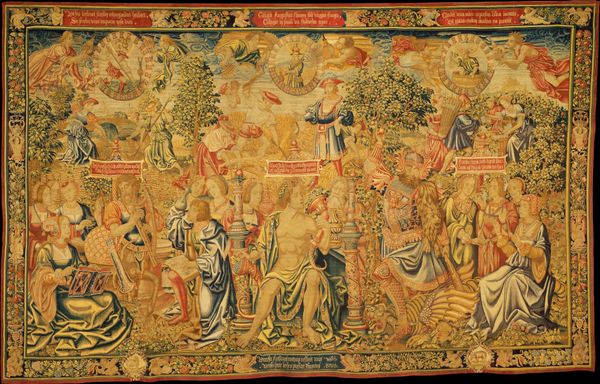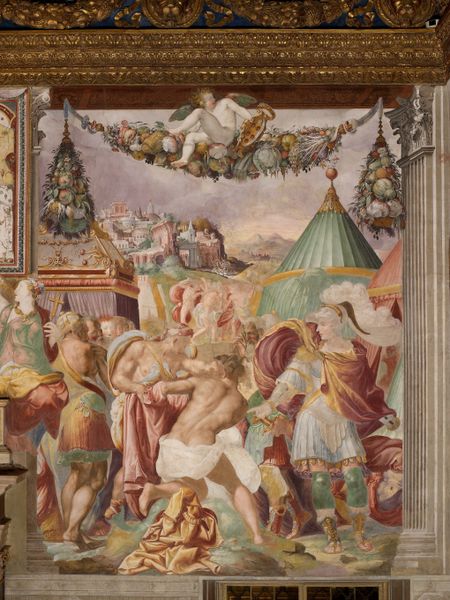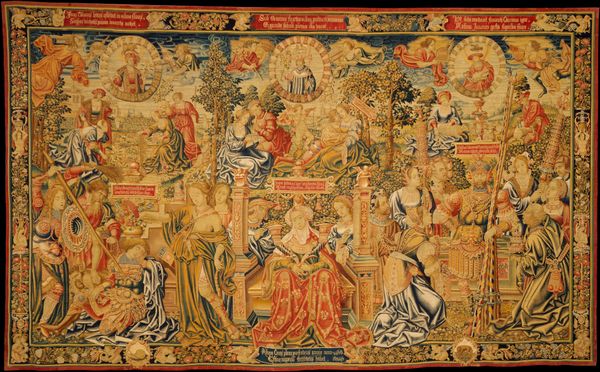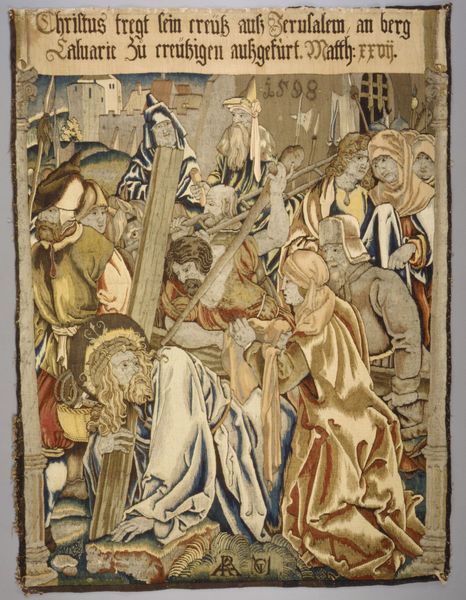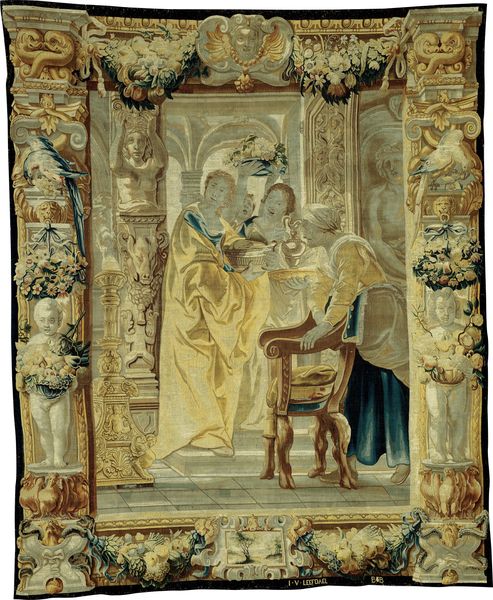
silk, weaving, textile
#
medieval
#
allegory
#
narrative-art
#
silk
#
weaving
#
textile
#
figuration
#
11_renaissance
#
group-portraits
#
genre-painting
#
history-painting
Copyright: Public Domain
This tapestry, "Month of September," whose maker is now unknown, depicts an idealized version of harvest time. In this scene, the grape harvest is rendered as communal work, showing figures in varying states of labor and leisure. The tapestry aestheticizes labor, obscuring class differences in this celebratory, sensual depiction of abundance. Note the barefoot figures crushing grapes in a vat, while others, seemingly of higher status, stand outside it. How might our understanding of the social hierarchy of labor change if the artist had chosen to depict the exploitation and hardships faced by peasants? The zodiac symbols framing the central scene remind us that time is cyclical, which can be a source of comfort. The tapestry presents a vision of an abundant world, reminding us of the relationship between labor, nature, and the passage of time.
Comments
minneapolisinstituteofart almost 2 years ago
⋮
In the Roman calendar, September 3 marked the feast of Bacchus, Roman god of wine, agriculture, and drunken revelry. Shown here, to the left of the grape stomp, is a red-nosed Bacchus, adding freshly harvested grapes. The upper corners of the tapestry acknowledge Bacchus’s parents: Jupiter, ruler of the Roman gods, and Semele (or Semela), a mortal woman. According to one version of the myth, Jupiter’s supernatural power consumed Semele in a moment of passion, and Jupiter brought the pregnancy to term. Bacchus was later known as having one father and two mothers, both male and female qualities, and often depicted as androgynous and beardless. This tapestry derives from a set dedicated to months of the year. Five others from the set survive in the collections of the Metropolitan Museum of Art, the Art Institute of Chicago, and Dumbarton Oaks (Washington DC).
Join the conversation
Join millions of artists and users on Artera today and experience the ultimate creative platform.
